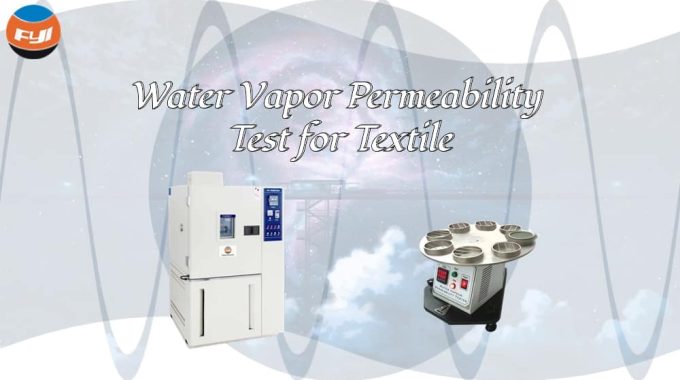
Water Vapor Permeability Test for Textile
Breathability is another term for water vapor permeability. According to Wikipedia, a fabric’s breathability is its capacity to let the passage of moisture vapor through it. It is especially crucial for active wear. You need more breathable clothing when your body creates more heat, like during sports exercise, for example. Wearing breathable clothing allows the body to expel moisture and vapor. Breathable clothing facilitates rapid drying but does not “stop” you from perspiring or creating moisture, which is a normal reaction.
The capacity of a fabric to permit air to move through it is known as air permeability. Generally speaking, air permeable textiles have a rather high moisture vapor transfer rate. However, breathability is not a need for air permeable materials.
Contents
Mechanism of water vapor permeability
Tests are used to determine how many grams of water vapor can go through a cloth in a certain amount of time. The test findings are then shown as g/m²/24 hours, an MVT (moisture vapor transfer), or a RET (resistance of evaporation of a textile).
RET
The degree of fabric resistance to evaporation is indicated by the RET value. The breathability improves with a decreased resistance, or RET.
A cloth with a RET value of 0 has the best breathability possible. The material is completely non-breathable when its RET value is 30 or above.
MVT
Two mechanisms are involved in moisture vapor transfer (MVT) in waterproof materials.
Physical: When the holes in microporous coatings or laminations are so tiny that liquid water cannot pass through them. Nevertheless, these “micro pores” allow vapor water molecules to flow through since they are far smaller than liquid water molecules.
Chemical: When the hydrophilic PU is negatively charged and the water molecule is positively charged, the water is drawn via the PU’s intermolecular gaps. The water is then forced through the spaces until the water vapor completely penetrates because the ionic interaction is rather weak.
The difference in temperature and humidity between one side of the material and the other is known as the driving force or differential pressure. Moisture will flow toward dry according to the second rule of thermodynamics. Consequently, until there is balance, warm, humid air will move in the direction of cold, dry air.
Because of body heat and moisture, clothing often has greater temperatures and humidity levels inside. The heat and humidity are forced outside as a result of the differential pressure this produces. The more differential pressure there is to force heat and moisture out of clothes, the bigger the difference in temperature and humidity between the inside and outside of the garment.
Different types of water vapor permeability test
There are a lot of tests and standards in the world to check water vapor permeability of fabrics.
The Upright Cup Test
It measures the amount of water vapor that passes through clothing. The fabric is fastened to an upright, sealed cup, and the amount of moisture that seeps through the fabric into the cup is measured over the course of a day.
After that, the cup is weighed, and the reading shows how much moisture the cloth may release in grams per square meter (gr/24 hours/m²). The degree of breathability increases with a greater number.
The Inverted Cup Test
It calculates how much water the clothing has absorbed. After the cloth is positioned over a waterproof, moisture-vapor-permeable barrier, it is submerged in a certain volume of water. After that, a weighted test cup is inverted, sealed, and put on top of the sample. The cup is weighed and displays the volume of water that the cloth has collected and retained over a 24-hour period. The Moisture Vapor Transmission Rate (MVTR) is indicated by this figure.
The Sweating Hot Plate Test
It gauges a garment’s ability to withstand evaporation and how much moisture it loses when heated, simulating the heat generated by the body whilst exerting oneself. The heat is generated by a metal plate in a lab that has been heated to a temperature that causes perspiration. In order to replicate actual wetness, both the clothing under test and water are placed on the plate.
The evaporation process, or simply how much energy is consumed to keep the plate cold, is demonstrated by measuring the plate’s temperature stability over time. This process mimics the body’s natural function of releasing moisture into its outer layers to maintain a standard temperature. The energy that this uses, or the result, is demonstrated as a RET value.
Water Vapor Permeability Tester
YG501S
The sample covers of a sample vessel filled with water are kept at a consistent temperature and humidity level. Water vapor eventually seeps out of the sample’s fixed region after a while. The water vapor transmission rate and the water vapor transmission index were determined by weighing the water vapor that was passing through.
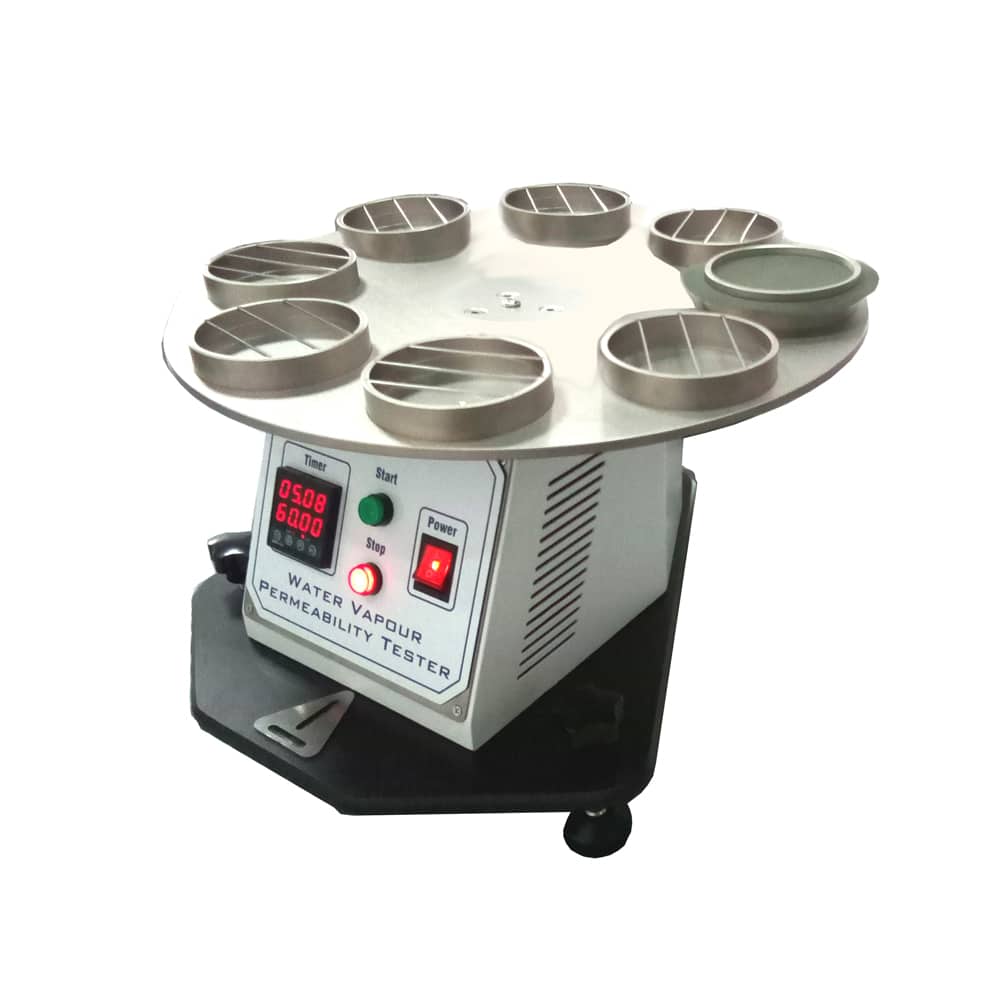
Using a hygroscopic approach, the Water Vapor Permeability Tester is used to determine how well water vapor can permeate cloth.
This device is used to gauge how permeable a material is to moisture, including space cotton and other nonwoven clothing.
One of the key markers of clothing comfort and hygiene is moisture permeability, which may show how well steam and sweat work in garments.
YG501D
The rate of water vapor transfer for fabric, coated fabrics, composite, clothing, industrial textiles, etc. is ascertained using the water vapor permeability test.
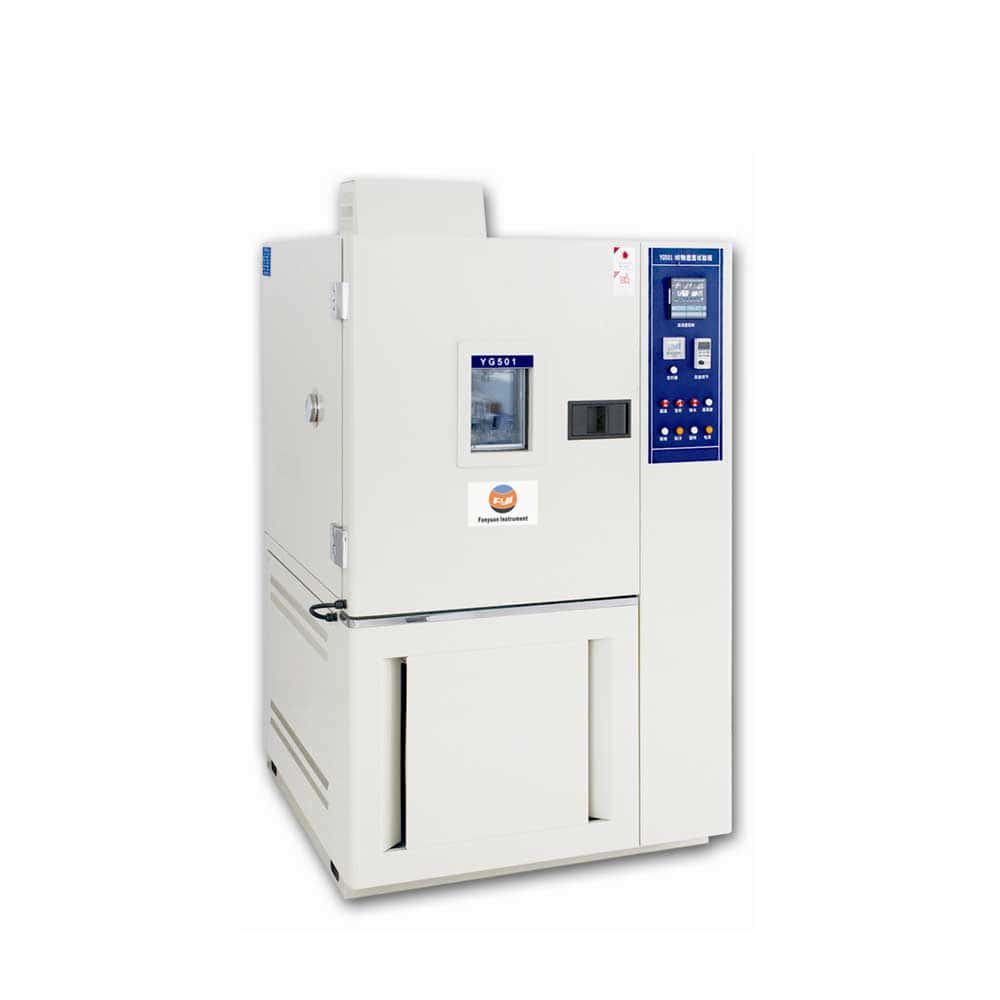
Equipped with a 500×500×500mm chamber and a customized air flue to regulate temperature, humidity, and wind speed, our machine typically comes with a single set of cups. Regarding ASTM E 96, the test methodology is different. Different techniques call for different cups. Customers should follow the instructions while using the machine since there are two methods available: the desiccant technique and the water method. In the customer’s lab, kindly prepare one electronic balance as well. The following are parts of features of water vapor permeability test machine.
The components of the water vapor permeability test apparatus are as follows:
- Brightened by PL fluorescence light, which is very light.
- Saturated steam provides humidity, whereas air conditioning removes moisture.
- Workroom humidity and temperature may be adjusted and are appropriately shown on an LCD panel.
- Test time is adjustable and appropriately shown on the timer’s LED.
- This water vapor transmission cabinet has an adjustable rack rotation speed.
References
FunctionalTextiles–Shangyong Zhang, Tatyana Merkulova, Victor Kuzmichev
Leave a Reply
You must be logged in to post a comment.
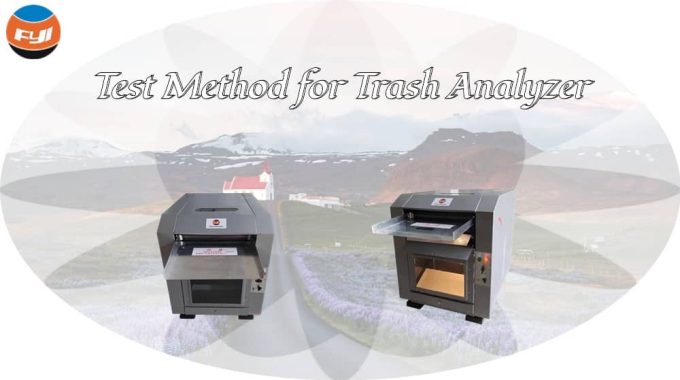
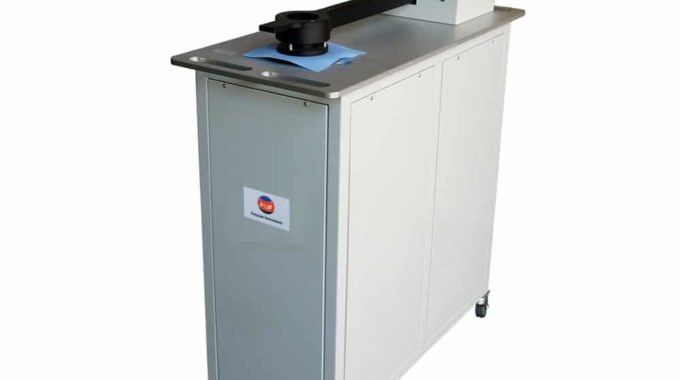

Can’t get enough of insightful content? You’ll find plenty to satisfy your intellectual curiosity here.